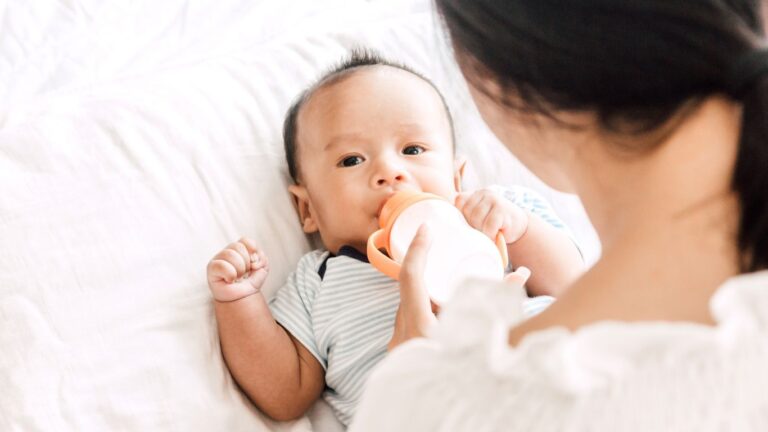Infants up to 6 months should receive only breast milk or baby formula, such as vitamin D3 and possibly medicines. That’s all. In the first six months, even on hot days and even formula-fed infants fed do not need water, glucose solution, juices, or teas, including herbal ones. This is the answer to the question, “When can babies have water?”
Babies have small stomachs and high caloric needs. The newborn brain consumes up to 80% of the energy consumed, and during the first 3 months of life, it increases by 64%. Babies need good quality fats, protein, and carbohydrates from the mother’s milk or best quality baby formula.
If you pour water or tea into a tiny stomach, you will deceive hunger, but you will not provide the baby with the necessary nutrients. This is a simple way to decrease growth, malnutrition, and sometimes even dangerous electrolyte disorders. In the case of breastfeeding, it is also a risk to reduce milk production.
When to Introduce Complementary Foods?
Recommendations indicate the range from 17 weeks to 26 weeks as the time when the child’s body is ready for foods other than milk or a European formula for infants. The signs of readiness to expand the diet are, for example, the ability to sit with support, control neck and head movements, and the disappearance of the extrusion reflex. These signs usually appear around the baby’s six months.
The first two years are crucial in the development of taste preferences. Parents should introduce typical complementary foods, such as vegetables, fruits, cereals, and so on. The order in which new products are introduced is not that important.
At this time, you can also start serving water. It should be spring or natural low-mineralized mineral water.
Meal Frequency and Serving Sizes
When the baby is learning to eat, there is a clear division of roles. The parent decides when and what the baby will eat, and the baby decides how much to eat. The recommendations do not specify the number of meals with solid foods per day. On average, however, bottle-fed infants at the end of 12 months eat 4-5 meals and 1-2 snacks.
There are no specific volumes, weights, or serving sizes of food that a child should eat. The parent’s ability to distinguish satiety and hunger signs is critical. It is the only indicator of whether the baby has eaten the right amount of a particular food. The infant knows the feeling of satiety and hunger from birth. The newborn eats as much milk as it needs and signals satiety, e.g., by pushing the nipple out of the mouth, and hunger by crying. The biggest mistake in feeding children is often overfeeding them. Only responsive feeding guarantees the baby will eat the portions it needs to be full.
Food Textures
In the first year of life and until 24 months, the baby is quickly developing biting and chewing skills. However, the best predisposition for these oral skills is between 6 and 10 months of age. Therefore, parents must provide their little one with foods with different consistencies. For babies older than a year, no food should be served in a bottle with a nipple. The baby should learn to drink from an open cup after 6 months.
The baby does not need to have crushed food for much. At 7 months, an infant is equipped with oral tools (gums, tongue, and saliva), which allow it to learn to bite and grind food in the mouth. Feeding the baby with blended foods for too long makes it difficult for the baby to learn.
